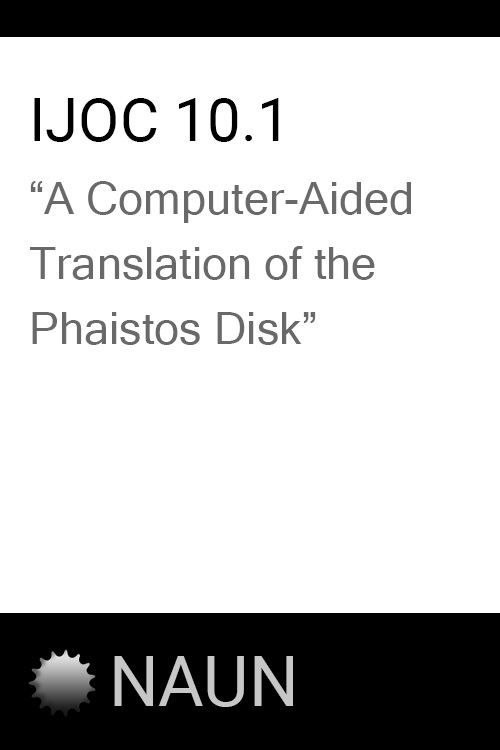About
Rethemiotakis' 2017 article reports the artifact finding of a gold signet ring cataloged as HM Number 1710. It is a Minoan artifact found in a rock-cut tomb at Poros, Heraklion (Crete, Greece). The artifact depicts a couple as well as what appears to be both the sun and moon. Rocks are around them. The publication includes high resolution photographs of the artifacts too.
Source: OMNIKA
Abstract: The Minoan gold ring presented here was found in a large rock-cut tomb at Poros, Herakleion and dates to the LM I B period. The subject of the depiction, the ›divine couple‹, is also known from other religious representations, specifically on rings and in the form of the ›Sacred Conversation‹. Altogether novel in Minoan iconography, however, is the rendering of a group of five celestial bodies above the gods. In a concise ideographic way, this represents nothing less than the way the Minoan lunisolar calendar operated: the sun represents the solstice or equinox as a standard point of reference for reckoning time, and the phases of the moon illustrate the duration of the lunar month. The full moon most likely indicates the specific date on which the great ceremonial event of the two gods’ encounter took place. Additional iconographic evidence from two stone moulds from Palaikastro suggests that, besides a lunisolar calendar, the Minoans had probably worked out the principles of an astral calendar, with reference to the vegetation cycle and the corresponding religious semiotics.
Keywords: Minoan gold ring; divine couple; celestial bodies; lunisolar calendar; Palaikastro moulds
Source: Author or Publisher
expand_more Read more Read less
Access
External sources
Primary
Myth
On Side A, the solar figure is first affirmed as the chief ruler. The author then asks for the figure to shine warmth and show its rays in order that the people can be assisted while sailing. On Side B, water is described as flowing westward to Iberia. An Iberian king's twenty daughters are described as watching (perhaps lamenting) the horizon as the sun is chased away by the other stars. Arrows are described as being shot, perhaps toward or from Sagittarius. Finally, the light drifts away to Asia and ascends again when the stars chase it back, ending the poem.
Belief system
Minoan culture refers to spiritual beliefs and customs practiced by peoples living in Crete and some Aegean islands between ca. 2800-1450 BCE.
Deity

The Minoan Solar Proto-Deity may represent the sun according to proto-myths in Linear A or Cretan Hieroglyphs. The figure may also be visible in Minoan material culture.
Translation

The "Minoan Sun Hymn" is an English translation of The Phaistos Disk in 2016 by Peter Z. Revesz. According to Revesz, the inscription on the Minoan artifact represents Cretan Hieroglyphs meant to be read from the inside-out. Moreover, the transliterated syllables may belong to the Proto-Hungarian or Proto-Finno-Ugric family of languages. According to Revesz's translation and transliteration, the inscription is a sun hymn, a form of proto-mythology, to a Minoan solar deity.
Myths cited
It looks like only the main myth was referenced in this work.
Belief systems cited
It looks like only the main belief system was referenced in this work.
Contributor
Cite this work
ChicagoRethemiotakis, Giorgos. "The ›Divine Couple‹ ring from Poros and the origins of the Minoan calendar." Mitteilungen des Deutschen Archaologischen Instituts - Athenische Abteilung 131–132 (2016/2017): 1-29.






